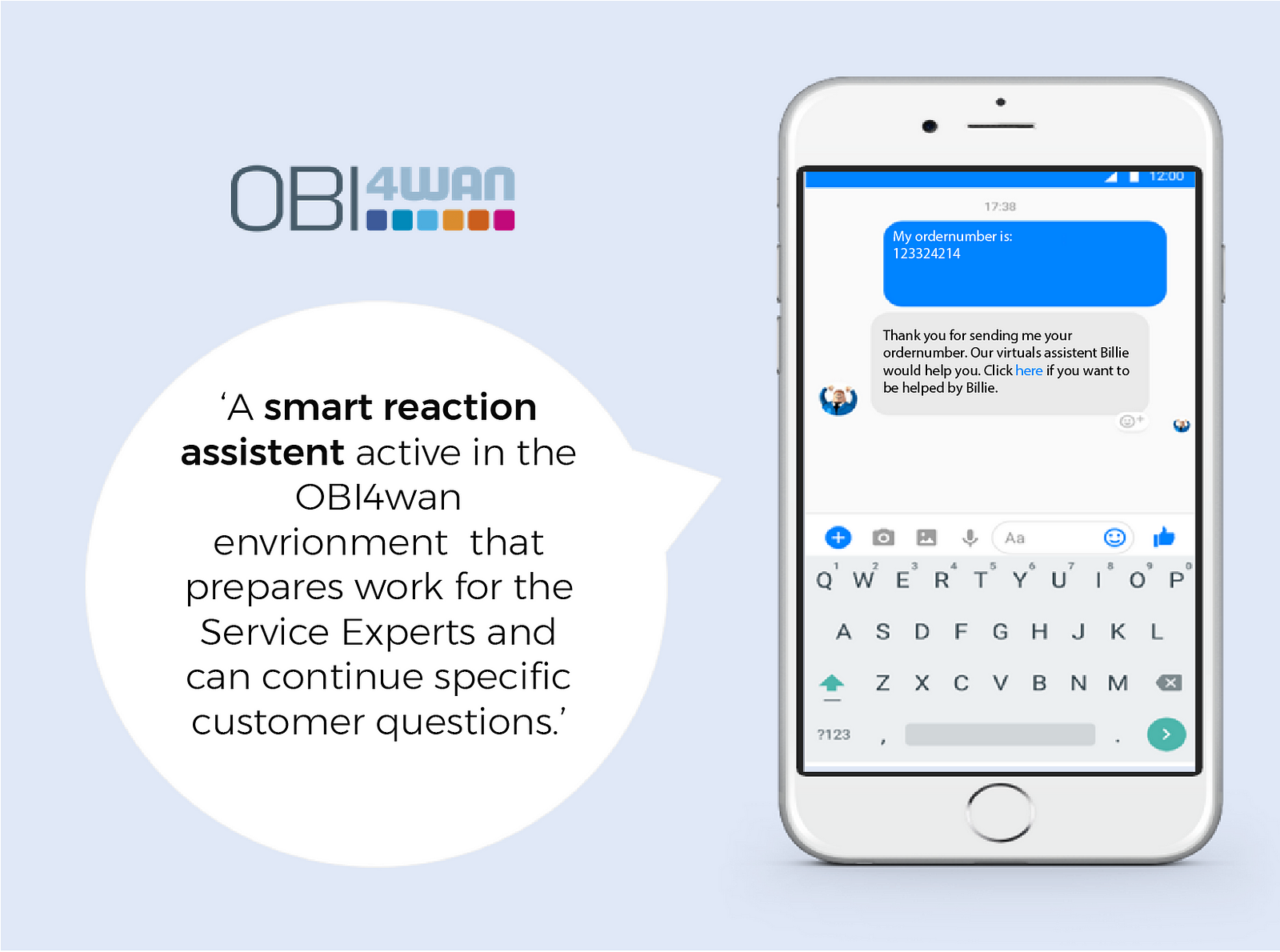How to become a team with chatbots
How to become a team with chatbots


Bol.com, a well-known e-commerce platform in The Netherlands and Belgium, serves nearly 8.5 million active customers. For a long time, chatbots have been an important part of customer contact and webcare. But how do you make sure that chatbots become a full-fledged part of a team? And how do you achieve the best mix of technology and people, which is important for the best service to the customer? Denise Drost-Ridder, Lead Business Analyst at bol.com, talks about the power of chatbot Billie in teamwork with employees.
The power of people in combination with technology
Bol.com believes in the power of people and technology. Already in 2008 their well-known chatbot Billie was launched, which still helps many customers through the website or the app. A large part comes in and is handled through Billie.
“Chatbots are becoming more and more important. We live in a 24/7 service society, where we prefer to have an answer to our questions right now. The bar for service is raising and technology is becoming more important to meet customer expectations,” says Denise.
Bol.com now uses two different types of bots: the bot which acts as a service expert, and the bot which acts as a work planner. The service expert will talk to customers to fully handle their questions, while the work planner will perform supporting tasks. In this way, bots capture the first-line customer contact, while the role of Service Agents shifts to second-line contact. More complex questions remain for the Service Agents.
At bol.com, a working structure has now been created in which bots are increasingly working together with people and other bots. The advantage of bol.com’s bots is that they work together in the same webcare tool as the Service Experts.
A number of examples in a row:
Collaborating with bots: OBI4Billie
The well-known chatbot Billie was already developed 10 years ago by Live Presence and is used on the website of bol.com and in the app. But since last year Billie has a smaller colleague: OBI4billie.


This bot is currently working on Facebook Messenger, but can also be used on other channels. He has the task of preparing the work, in which he requests specific information from customers, such as an order number or an e-mail address. The Service Expert can then start working on this immediately. But there is more! When a customer asks a question that is suitable for chatbot Billie to take care of, he can refer to it. In this way, OBI4Billie can transfer customer demand to both chatbot Billie and one of the Service Experts. In 2017, since its launch in September, OBI4Billie has sent some tens of thousands of messages.
Bots that work with people
A good example where people and technology worked together seamlessly was the chatbot Cupid, which was launched in February 2018. Cupid was a virtual shopper, who made a proposal for a valentine gift based on a number of questions. In 5 days time, thousands of messages were handled by the bot. Yet there was also a small group of Service Experts in the background to respond to funny (love) stories, jokes from a customer or to help the customer choose a gift if Cupid was out of inspiration. This made the experience with Cupid unique for the customers.
Cupid is a good example of a campaign bot around a specific moment, where close cooperation between the bot and service experts was decisive for his success. Interaction with the bot led to customer advice by the bot and nice responses by the service team. An interesting side-effect: conversations with the bot alone yielded more conversion than conversations involving a Service Expert.
Bots for routine work
A third example is the chatbot ‘Roy Voltooi’, which takes routine work off hands. Roy Voltooi has no direct customer contact. Instead, he takes on monotonous actions that would otherwise have had to be performed by a colleague Service Expert. The bot was literally named after Roy, the colleague who first carried out this work. A colleague who can now use his creativity in a different way to surprise customers.
Creating internal support: Together Everyone Achieves More
It is clear that bots are a big advantage for bol.com. Bots have a positive impact on productivity. Service via webcare is faster and more questions can be dealt with. Because the more complex questions remain for the Service Experts, they can spend more time and creativity in helping customers with more complex questions. The facts and figures of this deployment of scalable service are known, but what does the collaboration with bots do to the perception of the service agents?
Bol.com looked beyond the actual teamwork between people and bots. The result of a chatbot is easily measurable, but how does a chatbot instinctively become an integral part of the team? Bol.com started an internal investigation into the collaboration between man and technology. For example, the actual does not always correspond to the intuitive, for example in the case of the boost in productivity that bots bring. It has been shown that a chatbot contributes to the productivity of the Service Experts, but research showed that the perception of the Experts is that they still feel fully responsible for their own productivity. And although in many cases the Service Experts still experience the bot as a “machine”, human qualities are also attributed as “optimistic and enthusiastic”.
In order to achieve optimal cooperation, bol.com fills the gap between facts and perception. For example, it is being investigated how OBI4Billie becomes a more human colleague. Think of giving feedback to the chatbot, just like feedback is given to colleagues. The chatbots are also given a human name (such as Roy Voltooi), with which the chatbot also became the subject of conversation more often.
“We want to look beyond the actual teamwork and work towards intuitive teamwork. By also considering what it does with people around you, you get the best mix that can surprise the customer,” says Denise.
The changing task of mankind
Based on the experience of bol.com, we can conclude that the human task will become more valuable through the correct addition of technology. By adding technology to webcare, the skills we need from service employees are changing. In a number of cases, the service employee moves from a first-line employee to a second-line position. In the case of work preparation bots, service employees become more of a moderator who leads a conversation with the customer and ensures that the customer barely feels the difference between bot and person.
“Bots have an impact on people’s work. That is why you should actively involve colleagues in the development of a chatbot”.
